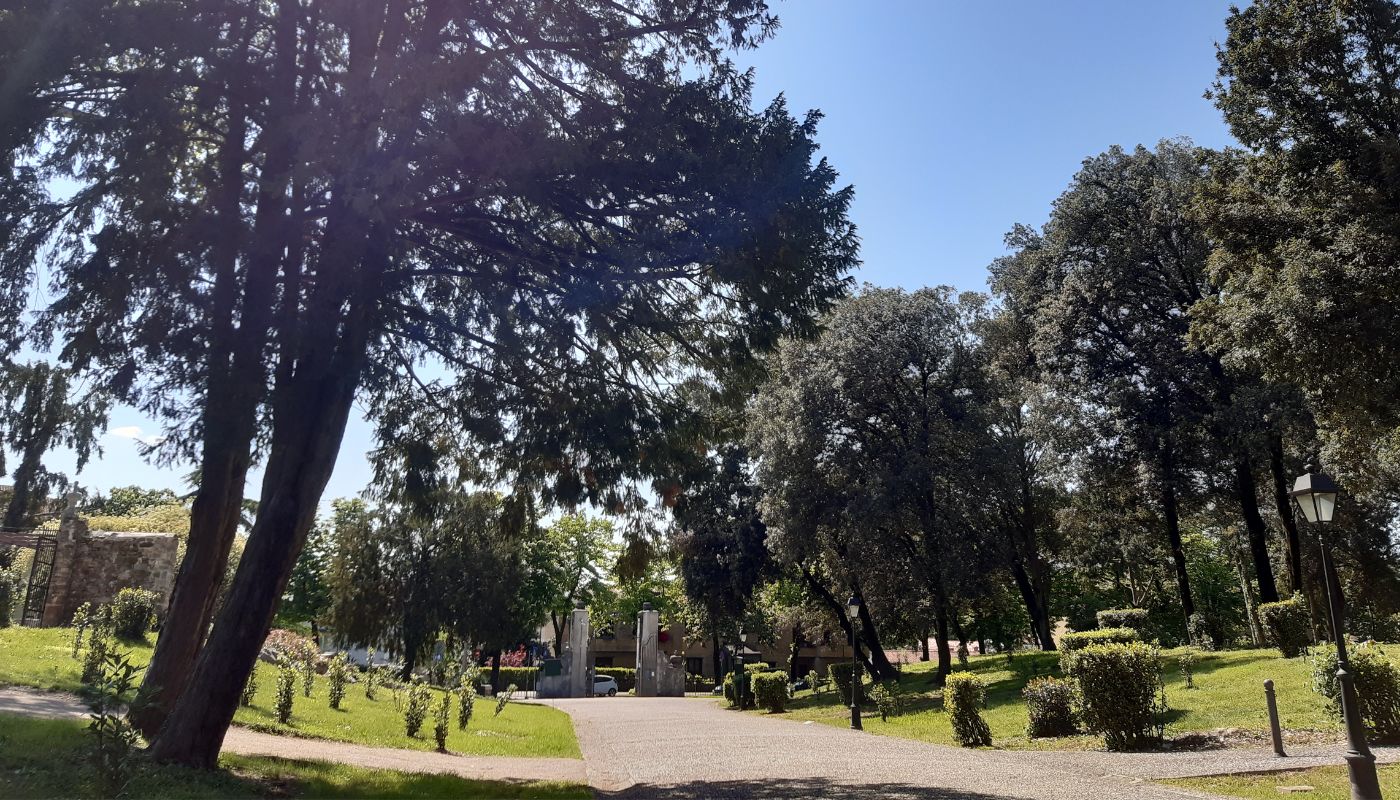
CORONINI PARK: FASCINATING YESTERDAY, BONY TODAY
by SONIA KUCLER
In a city that tenaciously cultivates its memories, the name of a park could last forever. The Coronini park does not have a tormented history. With its one hundred and fifty years, it is relatively young compared to other period gardens in Gorizia and the region; he was born into a single noble property until the death of his last descendant; it keeps its surface intact, defended by high walls, hedges, nets and gates. It survives two world wars but at the end of the short century it is nature that decides where and how to grow, so it faces the new millennium overflowing with greenery. The treatments come late (we are talking about a garden decided by the human hand that needs constant attention) and while many patriarchs have already collapsed, the most aggressive species have dominated unchallenged for decades, partially closing the evocative views of the city conceived by its creator, while creating shady and picturesque corners and rooms where those who crossed them could meditate in peace and solitude, reducing their worries. After the death of Count Guglielmo it became a public park, we are in the early 90s, it offered a sort of psychophysical assistance service to its assiduous visitors that perhaps no spa or nursing home could have guaranteed, a relationship made up of habits, colors in which green dominated, intimate and indispensable rituals, detachment from the busy road, of an island of peace.
Closed for the last five years for various and even tragic reasons, on March 22 it reopened its gates after a complete restoration supported by PNNR funds that lasted about a year, although extraordinary maintenance had already begun earlier. A span of time in which piece by piece many trees have been sawn, entire palm groves and reeds have disappeared, paths have been rearranged, historic shrubs and hedges have been eliminated, cypresses, laurels, myrtles have been planted to follow the original setting of a “Mediterranean garden”, work on the restoration of its numerous statues, pergolas, stairways and the temple erected at the beginning of the 20th century on the top of an artificial hill. There was a period, in the last year, when passing through Viale XX Settembre and casting an eye at the park was a psychically dangerous operation because the sight reminded the not so young of certain frames of Apocalypse Now of Vietnamese memory. It was a hard time for those who had a sentimental and exclusive bond with the park. The message of the Foundation that governs the park and the properties inherited from the Coronini is instead aimed at the future of the park, at the imperative need for cleaning and overall rearrangement of the plant parts that had been deteriorating (plants are a “building material” that cyclically ages and dies) and that had to be replaced with a work that would have given its aesthetic results only in a long time.
Leaving aside both vain sentimentality, my bond with the park is well known, and in-depth evaluations of the choices made, what I personally can see – looking out over the main entrance of the Coronini park – is a vast garden in which the voids prevail over the solids, the light is the master, the wings of the trees that flanked the main avenue and were behind the beautiful architecture of the pergolas with the niches of the eighteenth-century statues by Marinali, They have magically disappeared, only a few peeled conifers and a beautiful plane tree remain. Instead, the replanted meadows emerge and prevail, the numerous agaves and yuccas reintroduced years ago and in a phase of good growth both on the access staircase and on the belvedere where my beloved is taking hold again Ficus repens. In the part towards the hill the cleaning has been relentless, the silhouettes of the large karst rocks of which the park is dotted emerge strongly to mark the other supporting structure of the garden, while I climb the path towards the temple I meet the pleasant, albeit a little thinned, shade of the holm oak forest. Here I stop in the precise description because my reasoning wants to lead elsewhere. In the absence, unfortunately real, of a plant mass that imparts a pleasant vision, soft and continuous, in which, for example, the hedge-cut laurels give the main avenue a rather geometric and almost shaggy appearance with all due respect to philological restoration, in this temporary absence the backbone of the garden emerges with emphasis: the shapes of the ground, The rocks, the architectural constructions, what from the end of the 19th century to the beginning of the 20th century had been built gradually is now an extremely evident whole. The statues emerge on the whole, bright and comforting, numerous and of beautiful workmanship as you do not see similar ones either in Gorizia or in the surrounding area, freed from the dusty shadow of time. The statues tell the very particular story of secular, philosophical and in this case also tourist fashion that in previous centuries dominated the construction of gardens, no cross, no madonna, only dense and sinuous figures to represent the eternal Greek myths, River, Venus, Apollo, Narcissus… the indissoluble bond between Man and Nature. When taking the guest to visit his own garden was a bit like leading him to know the intimate feeling of his owner or his owner. Here, his name was Alfredo, she was Carolina.
La lingua originale di questo articolo è l'Italiano.

